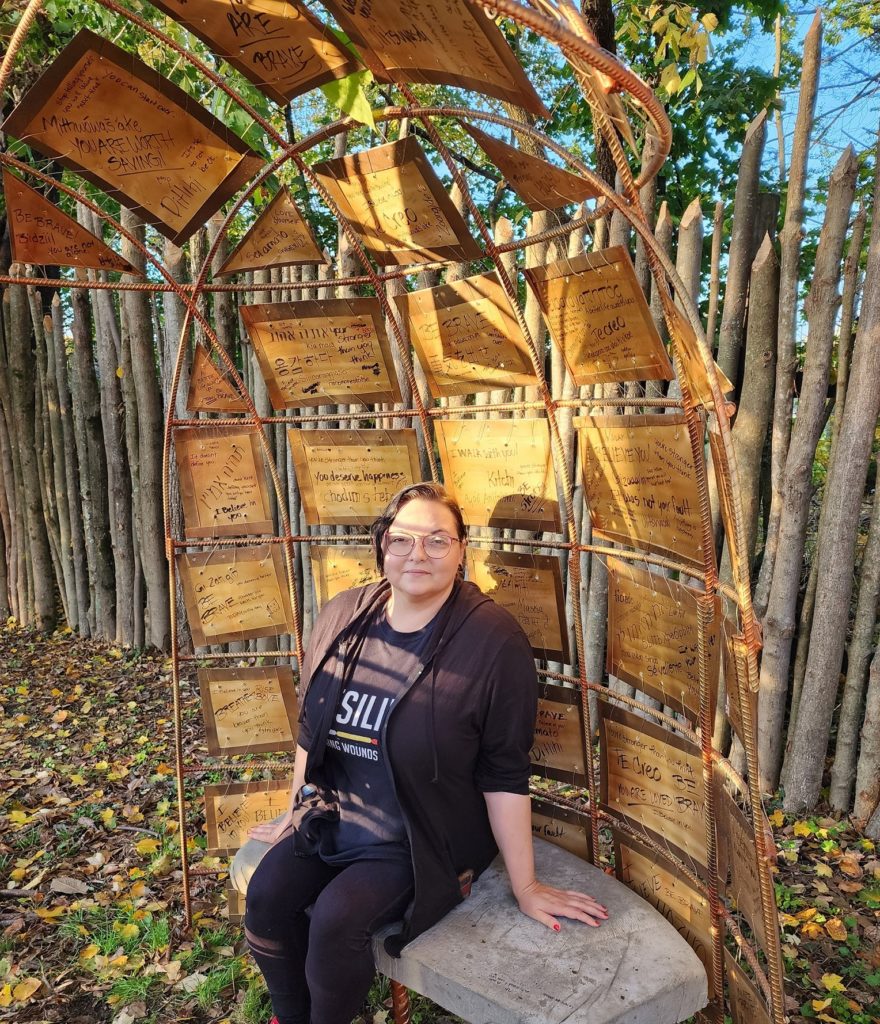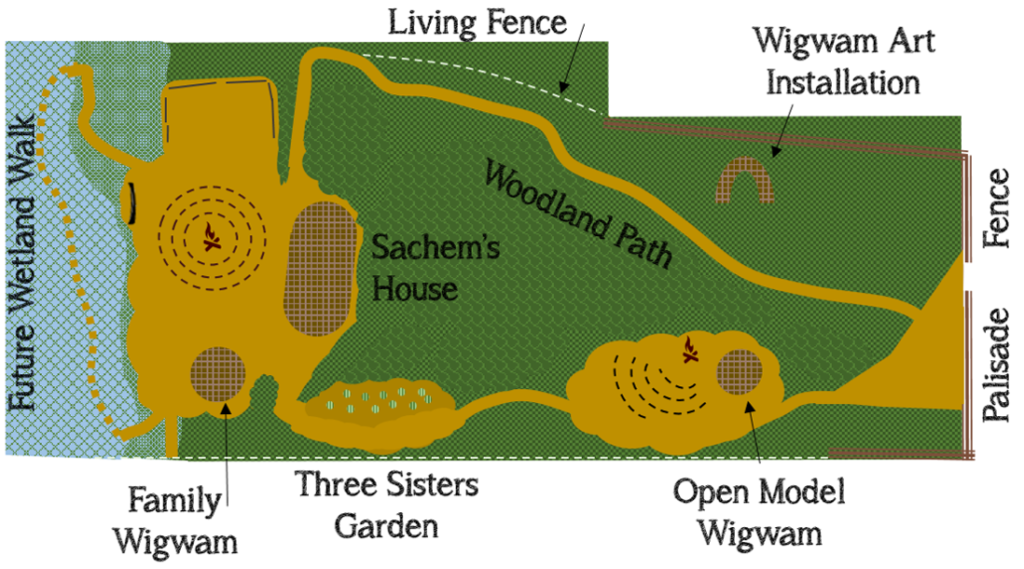
The Nowashe Village experience sparks a deeper understanding of, and appreciation for, the Indigenous culture that flourished in South Windsor for thousands of years. Here, artifacts come alive, and are displayed and used in real-time by our educators, docents and guest lecturers.
Bathrooms are available inside the ADA-accessible Wood Memorial Library. The trails in Nowashe Village are wide and meant to be as smooth as possible for all ages and abilities. However, we suggest you wear appropriate footwear to walk outside on grass or uneven ground. Check the weather before you come as well! Nowashe Village is sprayed regularly for mosquitos and ticks, but we encourage visitors to bring along their own bug spray.
A Brief Tour:
The first thing you’ll notice when you visit Nowashe Village is the palisade fence. Native Americans, or Indigenous Peoples, throughout New England and the Eastern Coast of the United States built palisaded forts as a protective measure against their enemies. According to Adriaen Block’s cartographer, the Nowaas people of South Windsor had a palisaded fort approximately where Nowashe Village and Wood Memorial Library & Museum stand today.
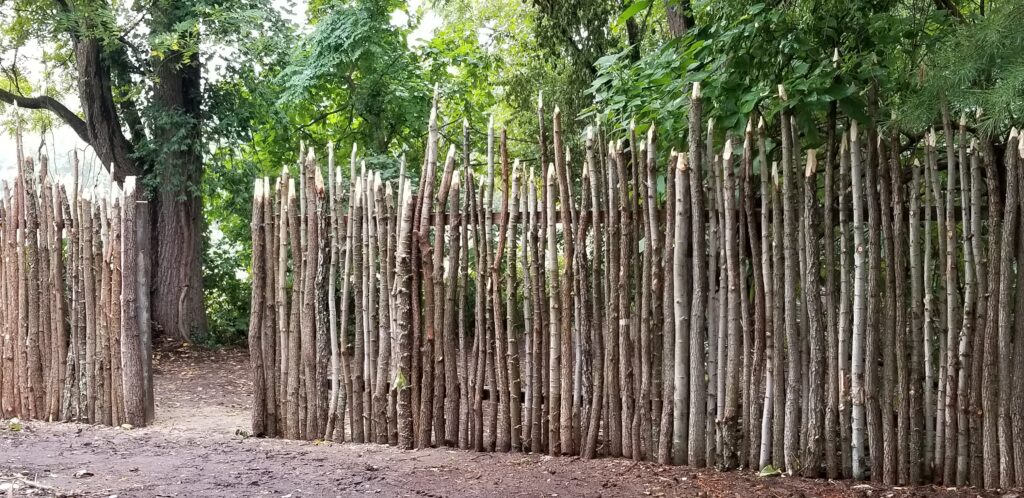
At the palisade fence, you’ll be greeted by a docent who will process your entrance fee(s) and explain how to operate the Self-Guided Tour on your personal electronic device. (You do not need to enter Wood Memorial Library.) If you do not have personal electronic device or not enough for all members of your party, hard copies will be available for loan.
The trails in Nowashe Village are wide and meant to be as smooth as possible to be ADA compliant. However, we suggest you wear appropriate footwear to walk outside on patches of dirt or grass on uneven ground. Be cognizant of the weather before you come as well. Nowashe Village is sprayed regularly for mosquitos and ticks.
The first learning station features a partially covered Wigwam. This view allows visitors to fully understand its structural elements. This station often is used for Native cooking demonstrations, discussions on archaeology or as an overall introduction site as to which Native Tribes built Nowashe from the ground up.
Just up the path is the Three Sisters Garden, featuring corn, beans and Squash planted together in large mounds roughly three feet apart. This “sister” method of companion farming demonstrates how Native Peoples had a working knowledge of Horticulture and ecology years before modern farming techniques were developed. Planting beans alongside corn helps minimize nutrient depletion. Beans are the “givers” in the Three Sisters Garden because they enhance the availability of a key nutrient – nitrogen – in the soil. Pole beans work best in this type of garden, as they benefit from being able to climb the tall corn stalks. And just as the cornstalks serve as climbing supports for bean vines, the broad squash leaves supply much-needed shade that keeps the soil moist and helps to prevent weeds.
Around the corner is the largest open space of the village, featuring a completed wigwam, a gathering space around the communal fire pit, and the village’s largest structure, the Sachem’s House.
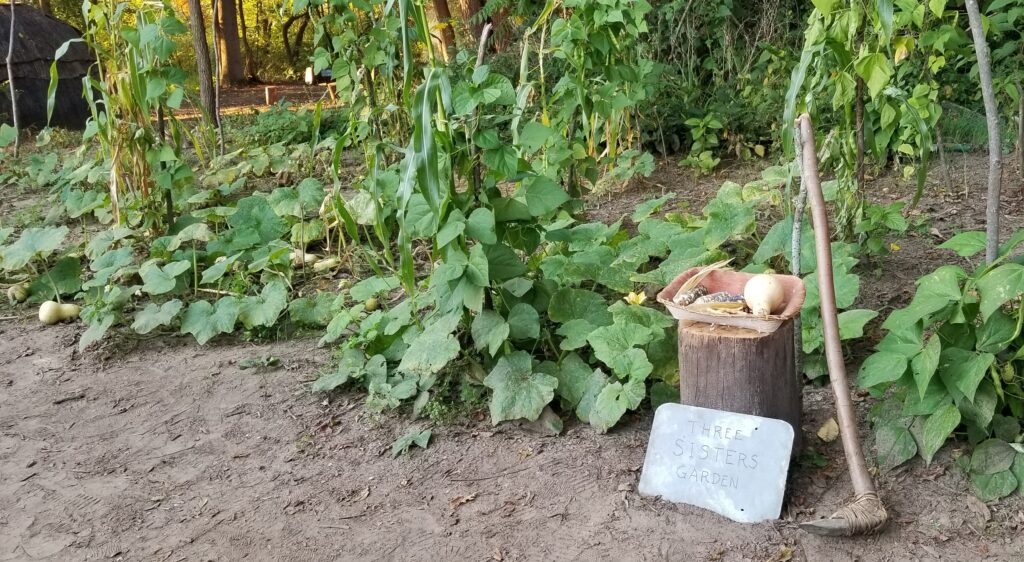
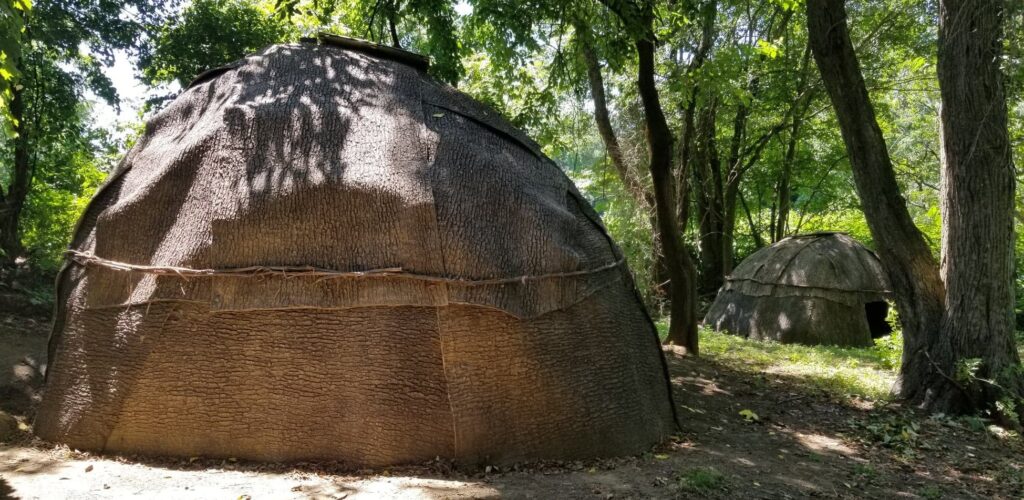
An addition in 2022 to the Village is a wigwam sculpture art installation by Indigenous artist Nayana Lafond. The sculpture for Jewish Arts Collaborative’s Be The Change Public Arts Movement was on display in the Fenway Triangle of Boston on Boylston Street during the summer and fall of 2022. In 2024, the sculpture will move to its permanent home at the Tamaquag Museum in Exeter, Rhode Island.
This sculpture is about Domestic Abuse. It was constructed of rebar donated by Harris Rebar as well as aluminum, stainless steel, plexiglass, concrete and more. When you sit inside the structure you will see words and phrases in over a dozen different languages including five Indigenous languages. These words are meant as a source of comfort and inspiration for those experiencing Domestic Abuse and those who have survived it. QR codes for human rights organizations, shelters, pro bono lawyers and more information are shared so that visitors can donate, learn more or seek help.
Learn more about the sculpture’s construction and time in Boston here.
